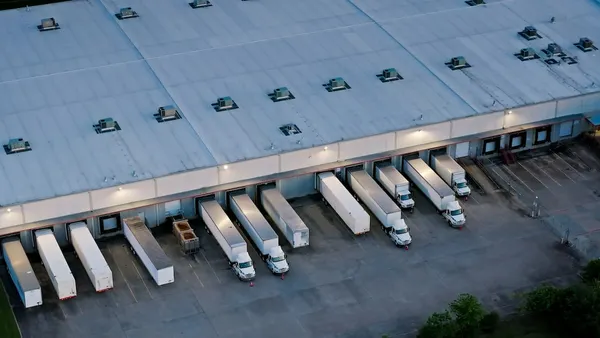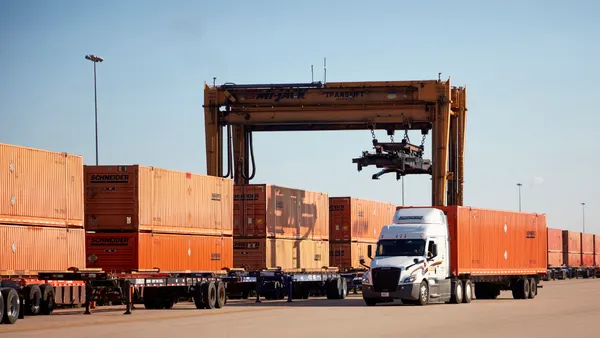Dive Brief:
- Skills tests required to obtain a commercial driver's license (CDL) created more than 6.4 million days of delays collectively for new drivers in 2016, according to research from the Commercial Vehicle Training Association (CVTA). NDP Analytics, which conducted the research, made its estimate based on available data from 33 states.
- CVTA attributes delays in securing a CDL to backlogs at state-run testing centers, along with a lack of sufficient appointments and testing personnel. States with third-party testing centers had fewer delays.
- The report estimated the delays lead directly to $1.1 billion in lost wages for truck drivers.
Dive Insight:
CDL skills testing varies by state. Eleven states and the District of Columbia use only state-run testing, 10 states use only third-party testing and the remaining states use a combination of the two.
It should be noted that CVTA represents providers of training programs for commercial truck drivers and may have an interest in revealing the shortcomings of state-run testing centers.
Regardless, delays in bringing commercial drivers into the workforce are an issue whether they're related to problems at state-run testing centers or not. The report said New Jersey had the longest wait times for skills testing: 47 days. The state exclusively uses state-run testing centers. California, which uses both state and third-party testing, was next with a 23-day average wait time.
"CDL permit holders waiting to take the skills test realize delays in getting a job and, subsequently, a paycheck," the report said.
The threat of a delayed paycheck is likely to be a significant deterrent to entering an industry. Carriers have raised wages and offered bonuses to attract drivers in a tight labor market, but those perks may not be enough to offset days waiting for a paycheck.
In addition, a number of economic and demographic factors have made it difficult for the freight industry to recruit truck drivers into the workforce. The average driver is nearing retirement age, and the job is often seen as unappealing to younger generations, leaving a gap in the talent pipeline to fill jobs. Many workers are instead opting into industries such as construction, especially in a strong economy.















